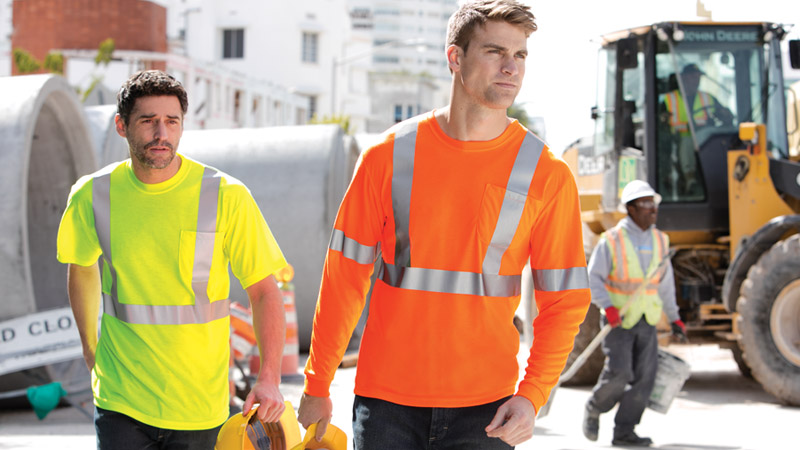The National Safety Counsel has named June as National Safety Month. So we thought we’d take this opportunity to touch on some basics of safety clothing—specifically high-visibility workwear.
This product category involves a complex set of regulations that require the clothing meet specific safety standards for workers. The most well known is ANSI.
The American National Standards Institute (ANSI) is a private non-profit organization that oversees the development of voluntary consensus standards for products, services, processes, systems and personnel in the United States.
The American National Standard for High-Visibility Safety Apparel and Accessories (ANSI/ISEA 107-2015) is a set of requirements that take into account jobsite conditions and hazards. Construction, maintenance, utility, emergency responders, airport ramp personnel and off-road workers are routinely exposed to potential injury hazards from their low visibility while on the job. ANSI guidelines help govern the selection and use of high-visibility shirts, outerwear and accessories to keep workers safer.
ANSI/ISEA 107-2015 details three performance classes of garments and identifies garment types based on expected use settings and work activities. These are designated as off-road (Type O), roadway and temporary traffic control (Type R) and public safety activities (Type P).
ANSI TYPE O, CLASS 1
Performance Class 1 offers the minimum amount of high-visibility materials to differentiate the wearer from non-complex work environments and is only appropriate for off-road environments.
ANSI TYPE R or P, CLASS 2
Performance Class 2 is considered the minimum level of protection for workers exposed to roadway rights-of-way and temporary traffic control zones. Garments will have additional amounts of high-visibility materials that allow for better definition of the human form.
ANSI Type R or P, CLASS 3
Performance Class 3 provides more visibility to the wearer in both complex backgrounds and through a full range of movement by the required placement of background, retro reflective and combined performance materials on the sleeves and pant legs (if present). Garments have the greatest level of high-visibility material. A garment or vest without sleeves worn alone is NOT considered Class 3 protection.
Basically, the more complex and hazardous the job environment, the higher the class designation for the clothing.
SanMar offers CornerStone high-visibility tees, jackets and vests for ANSI Class 2 and Class 3 uses. These styles meet the ANSI/ISEA 107 standard, so you can sell them with confidence.
One last thing: Enhanced visibility is NOT THE SAME as high visibility.
Workwear that is designated as enhanced visibility is non-ANSI. It’s intended for lower-risk jobs like shopping cart retrievers, dog walkers, parking lot attendants and delivery vehicle drivers.
Everyone wants his or her work to stand out. High-visibility workwear helps ensure it does while keeping the worker safe.
